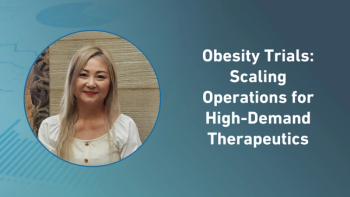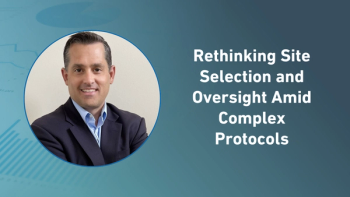
- Applied Clinical Trials-05-01-2003
Benchmarking Clinical Trials Practices in Central and Eastern Europe
Pharmaceutical companies and contract research organizations are setting up an increasing number of clinical trials in Central and Eastern Europe. The region offers attractive opportunities for sponsors to accelerate subject recruitment and to carry out clinical trials according to harmonized international standards and regulations. Recent concerns about data quality and cost-efficiency at CEE investigational sites, however, have led to regular evaluation of sites' clinical research performance and capacity. Now it is essential to introduce benchmarking and performance measurement to the conduct of clinical trials to identify best practices and to continually improve clinical research.
Pharmaceutical companies and contract research organizations are setting up an increasing number of clinical trials in Central and Eastern Europe. The region offers attractive opportunities for sponsors to accelerate subject recruitment and to carry out clinical trials according to harmonized international standards and regulations. Recent concerns about data quality and cost-efficiency at CEE investigational sites, however, have led to regular evaluation of sites' clinical research performance and capacity. Now it is essential to introduce benchmarking and performance measurement to the conduct of clinical trials to identify best practices and to continually improve clinical research.
Several factors have contributed to a significant increase in the number of clinical trials conducted in Central and Eastern Europe (CEE) over the past few years.
- Investigators are well educated, experienced, and highly motivated physicians eager to conduct clinical research-and thus have opportunities for professional development, international networking, and publication.
- CEE nations offer a huge pool of easily reachable patients interested in participating in clinical studies because of free access to modern therapies and medical equipment.
- Overall trial costs are lower than those in Western Europe.
- For the most part, well-defined regulatory processes make it possible to obtain all of the necessary approvals in a relatively short time.
In the highly competitive clinical research environment, however, the key issue for CEE is how to respond to new challenges and how to stay competitive. This could be achieved by overcoming the logistical and cultural hurdles, which are still considered a major concern by potential sponsors, and by comprehensive building of expertise and competencies that will provide a strong platform for future expansion of CEE studies.
Figures 1-3
The most appropriate response to the first suggestion would be creating a win-win situation for all parties involved in clinical research. This implies sustainable support and willingness of the sponsors to allocate resources for adapting necessary site infrastructure-and also extra effort by CEE governments to encourage new types of investments. That effort could mean technological restructuring of the health sector and creating opportunities for highly trained health professionals, investigators, and site personnel to acquire new practices and knowledge by participating in multinational research.
The second suggestion refers to building Centers of Excellence-institutions dedicated to performing exceptional clinical research in an environment focused on raising the overall standards of quality and effectiveness in various health care areas. Those centers could be defined and subsequently selected based on specific criteria, such as clinical research experience, facility description, investigator and research staff experience and expertise, and potential subject demographics/base. Centers of Excellence are meant to be core sites in CEE for developing expertise and capabilities for clinical research. Their main objective is to continually do more with less without compromising quality.
The presentation of a respective site or country can be judged only in comparison with other sites or countries participating in the same clinical trial. Applying performance benchmarking as a standard competitive tool-a tool focused on a set of compatible and comparable key performance indicators-could make the decision process transparent, effective, and more objective.
An additional goal is to enable sponsors to improve the quality of clinical research by using the results to compare the performance of investigative sites. Benchmarking could, therefore, be recognized as an essential technique for achieving continuous improvement.
Benchmarking analysis
Here we present the results of a performance benchmarking analysis that was carried out recently on a few international, multicenter clinical trials sponsored by Novo Nordisk A/S in various European countries. To reveal critical measures that change behaviors and drive performance, we measured performance indicators related to speed, quality, and quantity in clinical research aimed to reveal critical measures that change behaviors and drive performance.
The primary short-term objectives of this study were to identify the best performers across the region and to identify the aspects of conducting a clinical trial that could realize the most benefit from process improvement. Our long-term objective is to create a competitive environment in which it is possible to obtain full understanding of the performance and enablers of a "best in class" knowledge management process.
We currently perform regular benchmark reports following each core clinical trial that involves site participation in different countries worldwide. Here we present key findings from a benchmarking report that involves 11 countries, 5 from Central and Eastern Europe and 6 from Western Europe.
Key performance indicators
Speed.
We defined a set of key performance indicators aimed at measuring the performance of various parties involved in different phases of clinical trial management-sponsor, health authorities, ethics committees, and investigational sites. We expressed the indicators as number of days from protocol review committee approval to health authority (HA) approval, from HA approval to first subject first visit (FSFV), and from FSFV to last subject first visit (LSFV), with the following results.
- The shortest time for HA approval was 61 days in Spain.
- The longest time for HA approval was 162 days in Greece; however, Greece recruited its first subject 9 days after obtaining HA approval.
- Portugal recruited its first subject 137 days after obtaining HA approval.
- France had the shortest recruitment time, 17 days.
- Poland registered the longest recruitment time, 218 days.
A detailed overview of all participating countries is shown in Figure 1.
We concluded that the average time to get regulatory approval was about the same in CEE countries (126 days) as in Western Europe (121 days). The average time from HA approval to FSFV was shorter in CEE countries (38 days) than in Western Europe (68 days). The average recruitment period in CEE countries was 183 days (range 157-218 days). Although recruitment in Western Europe averaged only 129 days (range 17-175 days), sites in CEE countries randomized substantially more subjects.
Quantity was measured in terms of number of subjects randomized during the original recruitment period and when the recruitment period was complete. The trial's target enrollment for this trial was 455. Only 260 subjects were randomized during the primary recruitment period-and only Croatia, the Czech Republic, and the Russian Federation reached or exceeded their targets. At the end of the extended recruitment period, an additional 81 subjects were randomized, but the recruitment target of 455 subjects was not met. Only 341 subjects of the planned 455 (75%) were finally randomized. Nevertheless, all of the CEE sites recruited more subjects than originally planned (Figure 2).
Quality of the data was the last, but not least, part of the benchmarking report. We measured data quality in terms of the number of substantial queries issued per case report form (CRF). In that respect, sites in CEE countries were the best performers, with substantially fewer queries than sites in Western European countries (Figure 3).
It is important to stress that the results presented from this particular trial are very much in line with the outcomes of other benchmarking reports prepared so far.
Achieving best practice
We find benchmarking to be a cost-effective way to introduce best practices to the clinical development process. Transforming performance through benchmarking reveals how developing and implementing an effective metrics program can lead to improved data quality, reduced time to market, and lower overall development costs.
Using metrics to compare speed, quantity, and data quality demonstrates that CEE countries offer regulatory, sponsor, and investigator performance in clinical research that is good overall-and in some cases even better than their Western European counterparts. Additional studies should be performed worldwide to create new levels of clinical benchmarking and to facilitate clinical analysis across thousand of subjects. But on the basis of the analysis reported here, CEE countries offer competitive and attractive locations for investing in future clinical research.
References
1. P. Meng, "Eastern promise," Good Clinical Practice Journal, 4 (1) 8-11 (1997).
2. IBC Conference on Clinical Trials in the Central and Eastern European Countries, Budapest, September 1998.
3. Centre for Medicines Research International, "Benefits from benchmarking drug development," RQD Briefing, 1998, cmr.org.
4. Continuing Medical Education Conference on Benchmarking and Performance Measurement in Clinical Trials, London, January 1999.
5. Scott Martin and Falan Austin, "Getting the measure of performance in clinical research," Good Clinical Practice Journal, 9 (12) 19-22 (2002).
6. 9th Applied Clinical Trials European Summit, Interactive Focus Session: Latest experiences in Central and Eastern Europe, Lyon, France, April 2002.
Dražen Babic´,* MD, MSc, is a regional medical director of Novo Nordisk A/S Regional Office South East Europe, Železna cesta 18, 1000 Ljubljana, Slovenia, +386 1 2342 300, fax +386 1 2308 362, email:
*To whom correspondence should be addressed.
Articles in this issue
over 22 years ago
What Monitors Think of EDCover 22 years ago
Opportunities to Improve Informed Consentover 22 years ago
Rigor Vivusover 22 years ago
European Ethics Committees?Still Salad Rather than Soupover 22 years ago
Letters to the EditorNewsletter
Stay current in clinical research with Applied Clinical Trials, providing expert insights, regulatory updates, and practical strategies for successful clinical trial design and execution.




